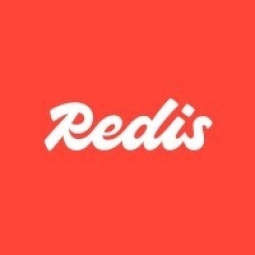Technology Category
- Application Infrastructure & Middleware - Database Management & Storage
- Infrastructure as a Service (IaaS) - Cloud Storage Services
Applicable Industries
- Cement
- Consumer Goods
Applicable Functions
- Maintenance
- Quality Assurance
Use Cases
- Construction Management
- Time Sensitive Networking
Services
- Cloud Planning, Design & Implementation Services
About The Customer
Ekata is a company that specializes in providing digital identity verification services. It operates a proprietary Identity GraphTM solution that helps consumers find old family and friends and learn more about their backgrounds, and enterprise businesses address fraud and identity verification. The company's solution makes on average 150,000 to 200,000 calls per second to its 3TB database. Ekata's services are used by more than 35 million people a month, with over 5 billion records being searched. The company is often the first destination for businesses and individuals looking to find contact information and run background checks.
The Challenge
Ekata, a company that provides digital identity verification services, was facing a significant challenge in managing its vast database. The company's proprietary Identity GraphTM solution was making an average of 150,000 to 200,000 calls per second to its 3TB database, a number that could even surpass during peak hours. The challenge was to handle this massive load without impacting the performance of the system. As Ekata expanded its identity dataset globally, the need for a better solution to manage this load without affecting performance and keeping operational costs low became increasingly apparent.
The Solution
Ekata turned to Redis Cloud to address its database management challenges. Initially, Ekata had stored the IDs to all its data in a key-value store on Amazon ElastiCache. However, after testing the performance and reliability of other solutions, including MongoDB, Cassandra, Couchbase, and Amazon ElastiCache, Ekata found that none could handle the full dataset size and still provide the single-digit latency that Redis could deliver. Redis Cloud was chosen as the primary database due to its ability to maintain sub-hundred millisecond end-to-end latency of its application and provide a consistent end-user experience. Furthermore, Redis on Flash, which stores hot values and keys in DRAM and cold values in cost-effective Flash-based SSDs, was leveraged to drastically reduce the application’s operational costs without compromising performance.
Operational Impact
Quantitative Benefit

Case Study missing?
Start adding your own!
Register with your work email and create a new case study profile for your business.
Related Case Studies.
.png)
Case Study
Improving Vending Machine Profitability with the Internet of Things (IoT)
The vending industry is undergoing a sea change, taking advantage of new technologies to go beyond just delivering snacks to creating a new retail location. Intelligent vending machines can be found in many public locations as well as company facilities, selling different types of goods and services, including even computer accessories, gold bars, tickets, and office supplies. With increasing sophistication, they may also provide time- and location-based data pertaining to sales, inventory, and customer preferences. But at the end of the day, vending machine operators know greater profitability is driven by higher sales and lower operating costs.

Case Study
System 800xA at Indian Cement Plants
Chettinad Cement recognized that further efficiencies could be achieved in its cement manufacturing process. It looked to investing in comprehensive operational and control technologies to manage and derive productivity and energy efficiency gains from the assets on Line 2, their second plant in India.

Case Study
Series Production with Lot-size-1 Flexibility
Nobilia manufactures customized fitted kitchens with a lot size of 1. They require maximum transparency of tracking design data and individual processing steps so that they can locate a particular piece of kitchen furniture in the sequence of processes.

Case Study
American Eagle Achieves LEED with GE LED Lighting Fixtures
American Eagle Outfitters (AEO) was in the process of building a new distribution center. The AEO facility management team decided to look at alternate options for lighting layout that could provide energy and maintenance savings. AEO would need a full-time maintenance employee just to replace burned-out fluorescent tubes.









